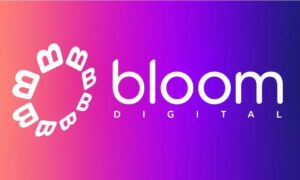Are you looking to boost your online sales and reach a whole new audience? Have you heard about Pinterest? With its visual platform and millions of active users, Pinterest is the perfect place to showcase your products and drive traffic to your website. Follow this thread to show you how to harness the power of Pinterest and maximize your success as a seller on the platform. Let’s dive in and start selling with style!
Intro to Selling on Pinterest
Pinterest, the popular image-based social media platform, has quickly become a valuable tool for businesses looking to expand their reach and increase sales. With over 300 million active users, Pinterest offers a unique opportunity for sellers to showcase their products in a visually appealing and easily accessible format. In this section, we will discuss the basics of selling on Pinterest and how you can make the most out of this platform for your business.
Firstly, it’s important to understand that Pinterest is not just another online marketplace like Amazon or Etsy. Instead, it is primarily a discovery platform where users come to find inspiration and ideas for various topics such as home decor, fashion, food, and more. This makes it an ideal place for brands to showcase their products in a creative and authentic manner.
To get started with selling on Pinterest, the first step is to create a business account which allows you access to various tools and features specifically designed for businesses. You can either convert your personal account into a business one or create an entirely new one from scratch. Once your account is set up, it’s time to optimize your profile by adding relevant information such as your website URL, bio with keywords related to your brand and products, and high-quality profile picture.
The next step is setting up “Rich Pins” which are enhanced versions of regular pins containing extra information about the product being featured such as pricing details or availability. Rich Pins give potential customers all the necessary information at a glance without having them leave the app. To enable rich pins for your website or online store, you need to add specific metadata tags onto each page of your site.
Now comes the fun part – creating eye-catching content! On Pinterest, visuals are everything so make sure to use high-quality images that accurately represent your products in different settings or angles. Vertical images tend to perform better compared to horizontal ones so keep that in mind while creating pins. Also consider using text overlays highlighting key product details or pricing.
The Power of Pinterest for E-Commerce Sales
Pinterest has quickly become a powerhouse for e-commerce sales, with over 250 million active users and high conversion rates. It’s not just another social media platform, but rather a unique visual search engine that allows businesses to showcase their products in a visually appealing way. In fact, studies have shown that 93% of Pinterest users are actively using the platform to plan purchases and make buying decisions. This makes it an invaluable tool for any business looking to increase their online sales.
One of the main reasons why Pinterest is so effective for driving e-commerce sales is its highly engaged user base. Unlike other social media platforms where users may scroll quickly through their feeds, Pinterest users actively search for specific items or ideas. This means that when someone clicks on your pin, they are already interested in what you have to offer.
Moreover, pins on Pinterest have an incredibly long lifespan compared to other forms of content. While tweets and Instagram posts have an average shelf life of just a few hours, pins can continue to be repinned and discovered by new users months after being initially posted. This means that your products have a much higher chance of being seen by potential customers over time.
Another key aspect of harnessing the power of Pinterest for e-commerce success is having visually appealing pins. High-quality images that showcase your products in action or styled creatively will catch the eye of pinners browsing through the platform. It’s important to remember that people often use Pinterest for inspiration and ideas, so your pins should convey a lifestyle or experience rather than just focusing on the product itself.
In addition to images, utilizing keywords and descriptions can greatly impact how discoverable your pins are on Pinterest’s search engine. When creating boards and pins for your business account, make sure to include relevant keywords in board titles, descriptions, and alt text for images.
Collaborating with influencers or partnering with popular accounts can also greatly increase exposure to your brand on Pinterest. Influencers and popular accounts have established audiences who trust their recommendations, making it a powerful way to reach potential customers. Consider reaching out to relevant influencers in your niche to collaborate on sponsored pins or boards.
Utilizing Pinterest’s advertising tools can help boost your e-commerce sales even further. Promoted pins allow businesses to target specific demographics, interests, and keywords to reach a wider audience. You can also track the performance of your promoted pins through analytics and adjust your strategy accordingly.
Understanding the Target Audience on Pinterest
One of the first steps to successfully selling on Pinterest is understanding your target audience. This social media platform has a large and diverse user base, with over 400 million active monthly users worldwide. However, not all of these users are potential customers for your brand or product. By identifying and understanding your target audience on Pinterest, you can tailor your strategy and content to better reach and engage with them.
The first aspect to consider when understanding your target audience on Pinterest is demographics. According to Pinterest’s own data, the majority of its users are women (71%), with a wide range of ages represented. In terms of income, 40% of Pinterest users have a household income of $100k or more annually, making it an ideal platform for brands targeting high-income consumers. It’s also important to note that as the platform grows in popularity, the demographics may shift.
It’s also crucial to understand how these users interact with the platform and what motivates them to use it. Unlike other social media platforms where scrolling through an endless feed is common behavior, Pinterest users are actively searching for ideas and inspiration related to their interests or needs. This means they are in a mindset open to discovering new products or services that align with their interests.
To get even more specific in understanding your target audience on Pinterest, it’s essential to do some research into their specific behaviors and preferences within the platform itself. Utilize tools such as analytics dashboards provided by Pinterest Business accounts or third-party platforms like Tailwind or Hootsuite to gather insights about your followers’ engagement patterns.
Additionally, take advantage of features like hashtags and keywords in pin descriptions so potential customers can easily discover your content through search results. Pay attention to which types of pins perform well among your followers – is it product photos? Infographics? DIY tutorials? Knowing which formats spark interest can help you create more targeted and effective content for your audience.
How to Optimize Your Profile for Selling on Pinterest
Pinterest is not just a platform for collecting and bookmarking ideas, it’s also a valuable tool for businesses looking to sell their products or services online. With over 367 million monthly active users, Pinterest has become a popular e-commerce destination with the potential to drive high-quality traffic and increase sales.
If you are planning to utilize Pinterest for your business, it’s crucial to optimize your profile in order to have maximum success. Here are some key steps to follow when optimizing your profile for selling on Pinterest:
1. Complete Your Profile Information:
The first step in optimizing your profile is making sure all the necessary information is filled out completely. This includes adding a profile picture, writing an engaging bio that describes your business and what you offer, and providing a link to your website or online store.
2. Choose a Business Account:
Make sure you have a Pinterest business account rather than a personal one. A business account gives you access to analytics and other features that will help track the performance of your pins and boards.
3. Organize Your Boards Strategically:
Organizing your boards strategically will make it easier for potential customers to navigate through your content and find what they’re looking for. Create relevant boards around specific product categories or themes, use relevant keywords in board titles, and arrange them thoughtfully so that the most important boards appear at the top.
4. Optimize Board Descriptions:
Board descriptions provide an opportunity to include keywords related to the products or services you offer. Use keyword-rich descriptions that accurately describe what each board is about as this can help improve visibility in search results.
5. Utilize Rich Pins:
Rich pins add extra details such as pricing, availability, and source links directly onto images from your website or online store onto Pinterest posts. This makes it easier for users to find more information about your products without having to leave the platform.
6 . Create High-Quality Visuals:
Pinterest is a visually-driven platform, so it’s important to create high-quality images and videos that are appealing and eye-catching. Use bright colors, clear and high-resolution images, and make sure they are relevant to your brand.
Creating Captivating Graphics and Visuals for your Products
Creating eye-catching and visually appealing graphics is crucial for the success of selling on Pinterest. As a platform that heavily relies on visuals, it is important to make sure your product images stand out and capture the attention of potential customers.
One key factor in creating captivating graphics is high-quality imagery. This means using clear, high-resolution photos that accurately represent your products. Blurry or low-quality images can deter potential buyers and reflect poorly on your brand’s professionalism. Invest in good photography equipment or consider hiring a professional photographer to ensure your products are showcased in the best possible light.
In addition to having high-quality images, it’s important to keep in mind the overall aesthetic of your brand and product line when creating graphics for Pinterest. Consistency is key – try to use similar colors, fonts, and styles across all of your pins to create a cohesive look that will make it easy for customers to identify your brand.
Another way to make your pins stand out is by incorporating text overlays onto your product images. This could include adding pricing information, discount codes, or short catchy phrases that highlight the unique features of your products. However, be cautious not to overcrowd the image with too much text as it may become cluttered and unappealing.
Pinterest also offers various creative tools such as filters and stickers which can be used to enhance the visual appeal of your pins. Experiment with these options while keeping in mind that simplicity often works best on this platform.
When creating graphics for sales promotions or new product launches, consider utilizing lifestyle images instead of strictly product shots. These types of visuals allow potential customers to envision themselves using or wearing the product, making them more likely to click through and make a purchase.
Don’t underestimate the power of videos on Pinterest. With its autoplay feature, videos have a higher chance of catching users’ attention as they scroll through their feed. Create short and engaging videos showcasing how-to demonstrations or highlighting the benefits of your products to further entice potential customers.
Utilizing Pinterest’s Shopping Features
Pinterest has become much more than just a platform for collecting inspiration and ideas – it is now a powerful marketing tool for businesses of all sizes. With the introduction of shopping features on Pinterest, businesses can seamlessly sell their products directly to potential customers without ever leaving the platform.
So how exactly can you utilize these shopping features to maximize your success on Pinterest? Let’s dive into the details.
1. Set up a business account and enable the shopping feature
To take advantage of Pinterest’s shopping features, you must first have a business account. This will give you access to analytics, advertising options, and most importantly, the ability to use buyable pins. Once your account is set up, you can then enable the “Shop” tab in your settings. This will allow users to filter their searches specifically for shoppable Pins.
2. Create visually appealing pins with product tags
Pinterest is all about aesthetics and inspiring visuals. To make your products stand out, it’s important to create visually appealing pins that showcase your products in an enticing way. Use high-quality images or videos that highlight different angles and details of your product. And don’t forget to add product tags – these are clickable icons that appear on top of an image and lead directly to your online store.
3. Utilize Rich Pins for enhanced product information
Rich Pins are another great feature offered by Pinterest that allows businesses to provide additional information about their products right on the Pin itself. There are four types of rich pins available: app, recipe, article, and product pins. Product pins are especially useful as they provide real-time pricing and availability information along with a direct link to purchase.
4.Establish boards specifically for selling
Organizing your content into boards makes it easier for users to find what they’re looking for while browsing through your profile. Consider creating dedicated boards solely for products or collections that you’re actively trying to sell on Pinterest – this way users can quickly and easily find what they’re interested in purchasing.
5. Utilize promoted pins to reach a wider audience
Promoted pins are Pinterest’s advertising option that allows you to target a specific demographic or interest group with your shoppable content. This is an effective way to increase visibility of your products and reach potential customers who may not have discovered your brand otherwise.
Tips for Driving Traffic from Pinterest to Your Online Store
Pinterest can be a powerful platform for driving traffic to your online store and increasing sales. But with over 400 million active users, it’s important to have a solid strategy in place to stand out among the competition. In this section, we will discuss some top tips for using Pinterest effectively to drive more traffic to your online store.
1. Optimize Your Pins for Pinterest Search
Pinterest is essentially a search engine, so it’s crucial to optimize your pins for its algorithm. Use relevant keywords in your pin titles and descriptions, as well as in the image itself. This will help your pins rank higher in search results and be seen by more people.
2. Create Visually Appealing Pins
Pinterest is all about visuals, so make sure your pins are eye-catching and visually appealing. Use high-quality images that showcase your products or services in an attractive way. You can also add text overlays or graphics to make them even more engaging.
3. Utilize Rich Pins
Rich pins provide more information about your products directly on the pin itself, making them more informative and enticing for users. There are different types of rich pins available such as product pins, recipe pins, article pins, etc., depending on the type of content you’re promoting on Pinterest.
4. Pin Consistently
Consistency is key when it comes to any social media platform, including Pinterest. Make sure to regularly post new content and stay active on the platform by repinning other relevant content from users you follow.
5.Protect Your Links with UTM Tracking Codes
Adding UTM tracking codes to the links you share on Pinterest can help you track how much traffic each pin generates for your website/store. This allows you to see which types of content or strategies are most effective in driving clicks and conversions.
6.Be Strategic With Hashtags
Hashtags can increase visibility for your posts on Pinterest but don’t go overboard with them as it could make your pins look spammy. Stick to 2-3 relevant hashtags per pin and make sure they are specific to your content.
7.Participate in Group Boards
Group boards on Pinterest are a great way to reach a wider audience and get your pins seen by more people. Joining relevant group boards in your niche can help drive traffic to your online store, but make sure to follow the rules of the board and avoid over-promotion.
Monitoring and Analyzing Your Success on Pinterest
Monitoring and analyzing your success on Pinterest is crucial for optimizing your performance and achieving your goals on the platform. It allows you to track your progress, identify what works and what doesn’t work, and make data-driven decisions to improve your overall success.
The first step in monitoring your success on Pinterest is setting clear goals for yourself. Are you looking to increase website traffic, generate leads, or boost sales? Knowing exactly what you want to achieve will help you determine which metrics are most important for tracking.
Next, regularly checking your Pinterest Analytics is essential. This feature provides detailed insights into the performance of your pins, boards, and profile. You can see which pins are receiving the most clicks, saves, impressions, and engagement. Use this information to determine which content resonates best with your audience and replicate those strategies in future pins.
In addition to Pinterest’s built-in analytics, there are also third-party tools available that offer more advanced tracking features. Some popular options include Tailwind Analytics, Curalate, and Hootsuite Analytics. These tools provide even more detailed data about user demographics, pin engagement rates, follower growth over time, and other valuable insights.
Another crucial aspect of monitoring your success on Pinterest is keeping an eye out for trends in your industry or niche. Regularly researching popular keywords and trending topics within your target audience can help guide the type of content you create or share on the platform. Staying updated with current trends will not only attract more attention but also keep you one step ahead of competitors.
Analyzing the performance of your competitors’ profiles can also be a helpful strategy for improving your own success on Pinterest. Take note of their top-performing pins and boards and consider incorporating similar elements into your own content strategy.
Conclusion
With these tips and strategies, you can take your selling game on Pinterest to the next level and achieve maximum success. Utilizing rich pins, creating visually appealing images, engaging with your audience through comments and collaborations, using relevant keywords, and promoting exclusive deals are all key ingredients in a successful Pinterest sales strategy. So why wait? Start implementing these techniques today and watch as your sales soar on this popular platform. Happy pinning!



































